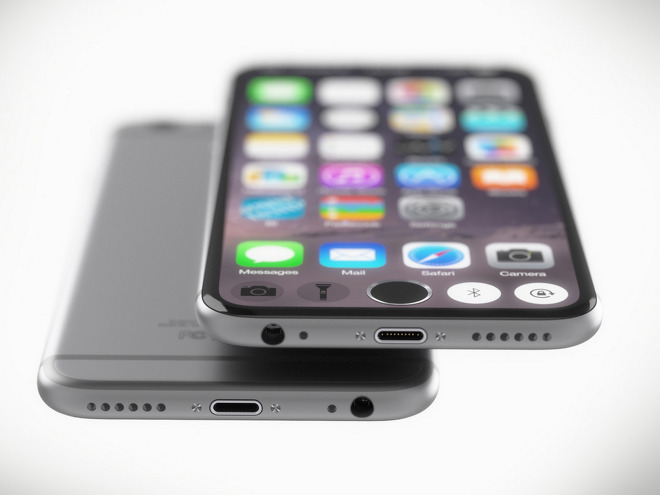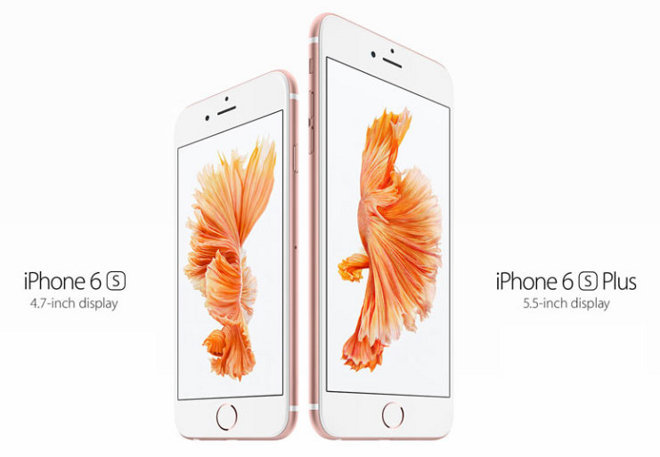The same Chinese website that detailed purported specifications for an upcoming iPhone 6c has now claimed that Apple's flagship iPhone 7 Plus will ship later this year with a 265GB storage option. However, the site's historical credibility is questionable.

According to a report by Gadget Arena offering an English language paraphrasing of the Chinese-language Mydrivers article, an upcoming iPhone 7 Plus is supposed to offer a 256GB storage variant "along with the normal ones," without clarifying whether this means the 16GB entry level version might increase, or whether Apple would offer four capacity options.
As memory component prices and technology improves, it's easy to speculate that larger storage options will emerge. However, Apple currently still offers 16GB versions of its flagship iPhones to reach a lower end price point, and its executives have defended this option in saying that the company's online iCloud service can help account for limited local storage by allowing customers to upload their photos and download their music on demand, and that skimping on memory components also enables Apple to liberally enhance features that more people find important, such as a much better camera.
It's not known exactly what mix of iPhone capacities Apple currently sells, but analysts have noted that over the past generation, Apple has been selling a more profitable mix of higher-capacity phones, an idea that could support a new, higher storage option at a premium price.
Nonplussed with Mydrive
The rumor, however, indicated that Apple will offer the new 265GB option only to the larger iPhone 7 Plus and "not with the standard iPhone 7," an idea that seems implausible and out of line with previous generations.
Apple launched iPhone 6 and 6 Plus in 2014 with virtually identical specs outside of the Optical Image Stabilization feature limited to the larger Plus, a design choice apparently related to the limited volume and thickness that preclude incorporating the OIS lens in the standard model.

The Plus also has a larger battery than the standard model could accommodate, and its screen features a higher resolution display that accommodates user interface features lacking on the standard iPhone.
However, Apple has never presented the Plus version as a superior device, and instead markets them as two options differentiated essentially only by size. In fact, we found that the original iPhone 6 performed better in a variety of graphics tests because iPhone 6 Plus had to drive its higher resolution with an identical A8 chip.
Last fall, Apple similarly released identically A9-powered iPhone 6s and 6s Plus models, again positioning them as two essentially equal options that buyers will select by way of personal preference to iPhone size, rather than as "good and better" options.
Battery schmattery
The same report also claims iPhone 7 Plus will get a 3100 mAh battery, almost a 12 percent capacity improvement over the current iPhone 6s Plus' 2750 mAh battery. It claims this would result in 2-3 hours of additional battery use.
However, last year Apple significantly reduced battery size in the move from 6 Plus (2915 mAh) to 6s Plus (2750 mAh), leveraging the increased efficiency of the A9 chip and software improvements to maintain the same battery life, while being more performant, saving the weight and thickness that additional battery size would demand.
This not only calls into question the report's claimed battery expansion to a specific, much larger size, but also its claim to reasonably estimate how long this extra capacity would extend the functional battery life of a product that will be running a new version of iOS 10 and a new A10 processor, when nothing is known about either huge variable.
More plausible rumors for iPhone 7 suggest the potential for a waterproof casing, the removal of its 3.5mm headphone jack, additional system RAM and support for USB 3 Lightning support (both already seen on iPad Pro).
This all happened before
Three years ago, Mydrivers described rumored specifications of the then-unreleased iPad mini, based on similarly anonymous sources in China.
The site claimed the new iPad mini would be "as thin as an iPad 2" and feature a Sharp IGZO display featuring a pixel density of 330 PPI, and sell between $249 and $299 in order to compete with the Nexus 7 and Amazon Kindle Fire, both of which were 7 inch tablets priced at $199.
However, the iPad mini Apple actually released that fall was much thinner than iPad 2 (5.8mm vs 8.6mm), used a IPS LCD display with a standard pixel density of 163 PPI, and was priced between $329 and $659, without any apparent regard for the cheap tweener tablets that were being sold by Amazon, Google and many others.
Rather than chasing 7 inch tablets with iPad mini, Apple focused on its being 23% thinner and 53% lighter, while also sellling a new, full sized iPad Retina Display. The company subsequently continued to dominate all other tablets vendors in unit sales and earned $20-30 billion in annual profits each year over the next three years while Google and Amazon shifted their strategies around and discounted their tweener tablets at clearance prices, earning virtually nothing from tablet sales.
Google gave up on its Nexus 7 and began to offer a new, larger Nexus 9 tablet that is a virtual clone of iPad in its new screen ratio. It was also twice as expensive as the low end Nexus 7 it had been trying to sell when Apple released iPad mini, making it clear that what Amazon, Google and others had been doing was not working, and not influencing Apple's strategy or roadmap.
The wholly incorrect iPad mini price rumors floated by Mydrivers were repeated without much critical thought. In regard to its completely wrong pricing predictions, one site claimed, "this isn't the first time we've heard these exact price points mentioned, in fact they've been reported on at least twice before. So for now we're willing to go along and trust that they're rather accurate."